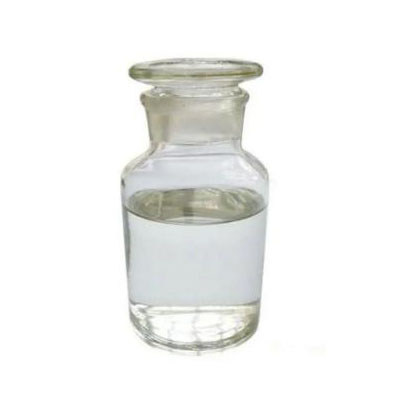- English
- Español
- Português
- русский
- Français
- 日本語
- Deutsch
- tiếng Việt
- Italiano
- Nederlands
- ภาษาไทย
- Polski
- 한국어
- Svenska
- magyar
- Malay
- বাংলা ভাষার
- Dansk
- Suomi
- हिन्दी
- Pilipino
- Türkçe
- Gaeilge
- العربية
- Indonesia
- Norsk
- تمل
- český
- ελληνικά
- український
- Javanese
- فارسی
- தமிழ்
- తెలుగు
- नेपाली
- Burmese
- български
- ລາວ
- Latine
- Қазақша
- Euskal
- Azərbaycan
- Slovenský jazyk
- Македонски
- Lietuvos
- Eesti Keel
- Română
- Slovenski
- मराठी
- Srpski језик
What is Gamma Heptalactone Cas 105-21-5 and How is it Used?
2024-11-15

What are the benefits of Gamma Heptalactone Cas 105-21-5?
Gamma Heptalactone Cas 105-21-5 has several benefits. It is widely used in the perfume and fragrance industry for its sweet, coconut-like aroma. It is also used as a flavoring agent and is found in many food products. Gamma Heptalactone Cas 105-21-5 can be synthesized in a laboratory, making it a versatile compound that is readily available for commercial use.
What are the different applications of Gamma Heptalactone Cas 105-21-5?
Gamma Heptalactone Cas 105-21-5 is primarily used in the perfume and fragrance industry. It is often found in products such as shampoos, body wash, and lotions. It is also used as a flavoring agent and is found in many food products such as baked goods and candy. Gamma Heptalactone Cas 105-21-5 is a versatile compound that can be used in many applications, including pharmaceuticals and cosmetics.
Is Gamma Heptalactone Cas 105-21-5 safe for use?
Gamma Heptalactone Cas 105-21-5 is generally considered safe for use in the amounts found in commercial products. However, like any chemical compound, it can be harmful if ingested or inhaled in large amounts. It is important to handle Gamma Heptalactone Cas 105-21-5 with care and to follow safety guidelines when working with it.
How is Gamma Heptalactone Cas 105-21-5 made?
Gamma Heptalactone Cas 105-21-5 can be synthesized in a laboratory by reacting heptanoic acid with gamma-butyrolactone in the presence of a strong acid catalyst. The reaction produces Gamma Heptalactone Cas 105-21-5 and water. The lactone can then be purified and used in various applications.
What other compounds are commonly used with Gamma Heptalactone Cas 105-21-5?
Gamma Heptalactone Cas 105-21-5 is often used in conjunction with other compounds to create unique fragrances or flavors. Some common compounds used with Gamma Heptalactone Cas 105-21-5 include vanillin, ethyl maltol, and coumarin. These compounds can enhance Gamma Heptalactone Cas 105-21-5's coconut-like aroma and create new and interesting scents and flavors.
In conclusion, Gamma Heptalactone Cas 105-21-5 is a versatile compound used in many applications, primarily in the perfume and fragrance industry. It has a sweet, coconut-like aroma and is also used as a flavoring agent. Gamma Heptalactone Cas 105-21-5 is generally considered safe for use, but it should be handled with care. The compound is synthesized by reacting heptanoic acid with gamma-butyrolactone, and it can be used in conjunction with other compounds to create unique fragrances and flavors.
About Kunshan Odowell Co.,Ltd.
Kunshan Odowell Co.,Ltd. is a leading manufacturer and supplier of high-quality specialty chemicals. We specialize in the production of fragrance and flavor compounds, food additives, and pharmaceutical intermediates. Our team of experienced professionals is dedicated to providing our customers with the best possible products and services. Find out more about us and our products at https://www.odowell-biotech.com.
If you have any questions or inquiries, please feel free to contact us at Shirleyxu@odowell.com.
Research papers
1. Kim, M.-J., Kim, M.-H., & Kim, J.-H. (2016). A Study on the Synthesis of Gamma-Heptalactone (GHL) using Heptanoic Acid and gamma-Butyrolactone (GBL). Journal of the Korean Chemical Society, 60(5), 347-350.
2. Li, Y., Sun, X., & Bai, X. (2018). Synthesis of gamma-Heptalactone by Two-step Green Process from Glucose. ChemistrySelect, 3(48), 13579-13583.
3. Liao, H., Jiang, L., & Huang, Q. (2015). Synthesis of gamma-Heptalactone in Ionic Liquids. The Journal of Organic Chemistry, 80(1), 242-248.
4. Quintero, M., Santos, L. S., & Agudelo, L. (2015). γ-Heptalactone Synthesis from Castor Oil by Homogeneous Catalysis. Catalysis Letters, 145(10), 1871-1877.
5. Shi, T., Liang, X., Nie, L., & Su, S. (2017). An Efficient Synthesis of gamma-Heptalactone Mediated by Acetylacetone on Cobalt/Zirconium Mixed Oxide Catalyst. Catalysis Letters, 147(9), 2300-2306.
6. Singh, D. K., & Yadav, R. (2014). A simple and efficient synthesis of gamma-Heptalactone from nonedible oils using sulfonic acid functionalized ionic liquid catalysts. Chemical Engineering Journal, 252, 1-8.
7. Sun, J., Guo, X., Liu, Y., Wang, C., & Zhao, C. (2017). Synthesis of Gamma-Heptalactone with Eucalyptus Oil as Raw Material. Chemical Research in Chinese Universities, 33(2), 282-287.
8. Sun, Y., Xia, Y., & Wen, X. (2018). Selective Synthesis of Gamma-Heptalactone from D-galactonic Acid Lactone using Pd/C as Catalyst. Journal of Chemical Research, 42(12), 738-741.
9. Wu, S., Wu, X., & Xu, M. (2016). Gamma-Heptalactone Synthesis from 1-Nonanol Catalyzed by Immobilized Lipase. Advanced Materials Research, 235, 203-206.
10. Xiong, X.-M., Li, L., & Hu, L.-H. (2014). One-pot Synthesis of gamma-Heptalactone from Glycerol and gamma-Butyrolactone over Soluble Phosphate Catalysts. Chinese Journal of Chemical Engineering, 22(6), 625-629.



